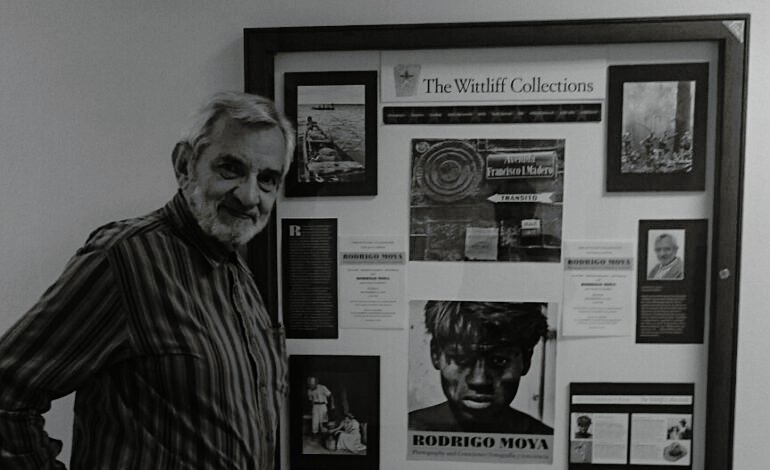Ariel Arnal, CC BY-SA 4.0 via Wikimedia Commons
Rodrigo Moya, the iconic Mexican photographer of Colombian origin who documented the social struggles of Latin America like few others, died at the age of 91 in his sleep at his home in the state of Morelos, accompanied by his wife, designer Susan Flaherty, with whom he shared more than four decades of life.
The death, which occurred on Wednesday, was confirmed this Thursday by the newspaper The Journey, medium that during his lifetime recognized the depth and documentary value of his work.
An archive for history
Moya left behind more than 40,000 negatives, considered a treasure of Latin American photojournalism. Among them, the iconic image of "Melancholic Che" stands out, a portrait of Ernesto Guevara taken in 1964 during a ceremony in Havana. The photograph shows the commander with an introspective expression, far from the usual epic aura.
Years later, Moya himself would confess that Che's death marked a turning point in his professional life:
“My naive intention to photograph guerrilla exploits vanished with the death of the commander.”
Witness of a turbulent continent
In addition to Che, figures such as Gabriel García Márquez passed through his lens, portrayed in 1966, shortly before publishing One Hundred Years of SolitudeDiego Rivera and former U.S. President John F. Kennedy. He also starkly documented the guerrillas in Venezuela and Guatemala, the Cuban Revolution, the invasion of the Dominican Republic in 1965, and the social movements of 1968.
Moya was born in Colombia in 1934 and moved to Mexico at the age of two. In 1955, he became a naturalized Mexican citizen and abandoned his engineering studies at UNAM to pursue a career in photojournalism.
After leaving graphic journalism, he founded the magazine Fishing Technique, which he directed for 22 years. Years later he ventured into literature and in 2001 won the INBAL National Short Story Award for Stories to read by the sea.
Recognition and legacy of Rodrigo Moya
His son, Pablo, expressed his hope for Moya to be remembered as a photographer “committed to truth and history.” Institutions such as the Mexican Ministry of Culture, UNAM, and INBAL mourned his death and recognized his legacy as “a key figure in Latin American photojournalism.”
For more stories like this, follow More Latin.
Sources:

